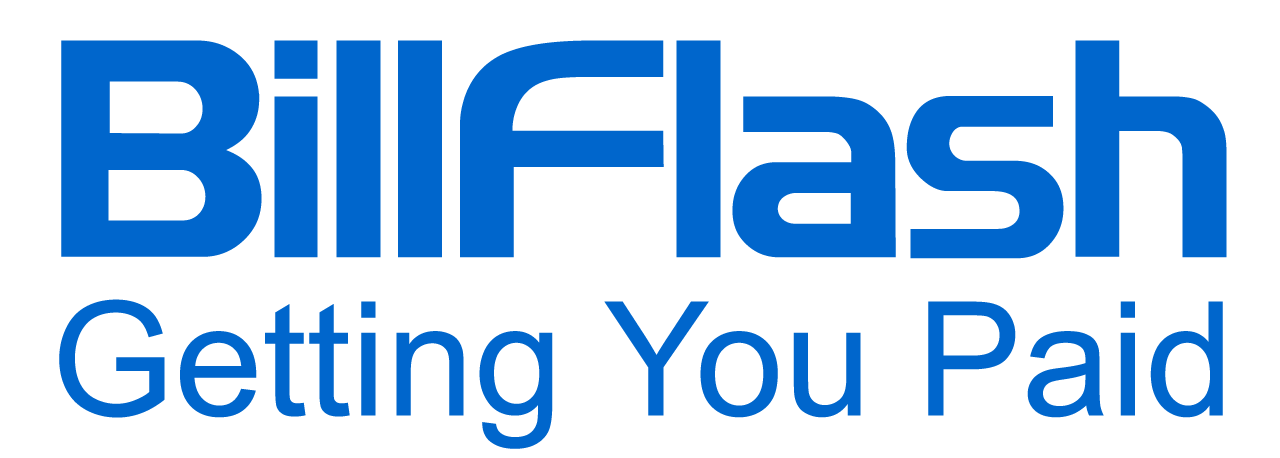Discover the ins and outs of AutoPay and how it can move your medical practice forward with our comprehensive guide.
In today's digital age, the evolution of technology has greatly impacted various industries, including healthcare. One area that has undergone significant transformation is the payment process within medical practices. Healthcare providers are increasingly adopting automated payment systems, such as AutoPay, to streamline their operations and improve patient experience. In this comprehensive guide, we will delve into the concept of AutoPay in medical practices, discuss its benefits, explore key features of an effective AutoPay system, and address challenges in its implementation.
The Concept

AutoPay, in the context of medical practices, refers to an automated payment process that allows patients to authorize recurring payments for their medical bills, insurance premiums, and other healthcare expenses. With AutoPay, patients have the convenience of having their payments automatically deducted from their chosen payment method. By eliminating manual payment processes, AutoPay offers numerous advantages for both patients and healthcare providers.
Implementing AutoPay in medical practices involves integrating a secure and reliable payment gateway that can handle recurring transactions. This technology ensures that patients' payment information is protected and encrypted, adhering to strict industry standards for data security. By leveraging advanced encryption algorithms, AutoPay ensures that sensitive financial information remains confidential and inaccessible to unauthorized parties.
Definition and Function of AutoPay
AutoPay is a system that enables medical practices to automate the collection of payments from patients on a recurring basis. It eliminates the need for patients to manually make regular payments, reducing the risk of missed or late payments. Through AutoPay, patients can authorize their healthcare provider to automatically deduct the amount owed from their designated payment source at scheduled intervals.
When a patient opts for AutoPay, they provide their payment information, such as credit card details or bank account numbers, to the medical practice. This information is securely stored and used to initiate recurring payments according to the agreed-upon schedule. The system sends automated payment reminders to patients, ensuring they are aware of upcoming deductions and allowing them to review their payment history and details.
The Importance of AutoPay in Healthcare
AutoPay plays a crucial role in healthcare by simplifying the payment process for both patients and healthcare providers. By automating payment collection, medical practices can ensure a consistent revenue stream, reduce payment collection costs, and allocate resources more efficiently. Additionally, AutoPay improves patient satisfaction by offering a hassle-free payment experience, minimizing the chances of financial misunderstandings, and providing a convenient solution for managing healthcare expenses.
For healthcare providers, AutoPay eliminates the need for manual payment processing, reducing administrative tasks and streamlining financial operations. This allows staff to focus on providing quality patient care instead of spending valuable time on billing and collections. By automating payment collection, medical practices can also reduce the risk of human error, ensuring accurate and timely payments.
From a patient's perspective, AutoPay offers convenience and peace of mind. Patients no longer need to remember payment due dates or worry about late fees. By authorizing recurring payments, they can ensure that their medical bills are paid on time, avoiding any disruptions in their healthcare services. AutoPay also provides patients with a transparent view of their payment history, allowing them to track their expenses and plan their budgets accordingly.
Furthermore, AutoPay promotes financial responsibility by encouraging patients to stay current with their medical bills. By automating payments, patients are more likely to fulfill their financial obligations, contributing to the overall financial stability of medical practices. This, in turn, enables healthcare providers to continue delivering high-quality care to their patients without the burden of unpaid bills.
In conclusion, AutoPay is a valuable tool in the healthcare industry, offering benefits for both patients and healthcare providers. By automating payment collection, medical practices can streamline their financial operations, reduce administrative tasks, and enhance patient satisfaction. With the convenience and peace of mind that AutoPay provides, patients can focus on their health and well-being, knowing that their medical expenses are being taken care of efficiently and reliably.
The Benefits of Implementing AutoPay in Medical Practices

Implementing AutoPay in medical practices can bring about numerous benefits that positively impact both the organization and its patients. Let's explore some of these advantages below.
Streamlining Payment Processes
With AutoPay, medical practices can simplify their payment collection process. Instead of manually processing each payment, staff can focus on more critical tasks, such as patient care. This streamlining of payment processes not only saves time but also minimizes the potential for human error that can occur during manual data entry.
Furthermore, AutoPay systems can integrate seamlessly with existing electronic health record (EHR) systems, allowing for automatic synchronization of patient billing information. This integration eliminates the need for duplicate data entry and reduces the risk of data discrepancies. The streamlined payment processes provided by AutoPay enable medical practices to operate more efficiently and effectively.
Enhancing Patient Experience
AutoPay offers patients a convenient and hassle-free way to settle their medical bills and other healthcare expenses. By eliminating the need for patients to remember payment due dates and make manual payments, AutoPay reduces the stress associated with financial transactions. This, in turn, enhances patient satisfaction and loyalty.
Moreover, AutoPay systems often provide patients with the option to set up recurring payments, ensuring that their bills are paid on time without any effort on their part. This feature not only improves convenience but also helps patients manage their healthcare expenses more effectively. By enhancing the overall patient experience, medical practices can foster stronger patient relationships and promote positive word-of-mouth referrals.
Reducing Administrative Burden
Medical practices often face administrative burdens related to payment collection, such as managing invoices, reconciling accounts, and following up on late payments. By implementing AutoPay, these administrative tasks are automated, reducing the burden on staff members and improving overall efficiency.
AutoPay systems can generate and send invoices automatically, eliminating the need for manual invoice creation and distribution. Additionally, these systems can provide real-time payment status updates, allowing staff members to proactively address any payment issues or discrepancies. By reducing the administrative burden associated with payment collection, medical practices can allocate their resources more effectively and focus on delivering high-quality patient care.
In conclusion, implementing AutoPay in medical practices brings numerous benefits, including streamlined payment processes, enhanced patient experience, and reduced administrative burden. By leveraging the convenience and automation provided by AutoPay systems, medical practices can optimize their operations and provide exceptional care to their patients.
Key Features of an Effective AutoPay System
An effective AutoPay system should possess certain key features to ensure seamless integration, security, and flexibility. Let's explore these features in detail.
Security Measures
Security is of paramount importance in the healthcare industry, especially when handling sensitive patient information and payment details. An effective AutoPay system should employ robust security measures, such as encryption and fraud detection, to protect patient data and ensure secure transactions.
One of the security measures that an effective AutoPay system can implement is tokenization. Tokenization is a process that replaces sensitive payment information, such as credit card numbers, with unique identification symbols called tokens. These tokens are then securely stored and used for future transactions, reducing the risk of exposing sensitive data.
In addition to tokenization, the AutoPay system should also have multi-factor authentication capabilities. This means that when patients set up their auto payments, they may be required to provide additional verification. This could include a one-time password sent to their cellphone, ensuring that only authorized individuals can access their payment information.
User-Friendly Interface
For patients to fully embrace AutoPay, the system needs to have a user-friendly interface. The system should be intuitive and easy to navigate, allowing patients to set up and manage their auto payments effortlessly.
One way to enhance the user experience is by providing clear instructions and guidance throughout the setup process. The AutoPay system can include step-by-step tutorials or tooltips that explain each option and feature, ensuring that patients feel informed when configuring their preferences.
Customizability is another important aspect of a user-friendly system. Patients should have the ability to customize their payment schedules, such as choosing the frequency and date of automatic payments. This flexibility allows patients to align their payments with their financial situations, ensuring they can manage their healthcare expenses.
Payment Flexibility
An effective system should offer payment flexibility to accommodate the diverse needs of patients. It should support various payment methods, allowing patients to choose the option that best suits their preferences and financial situation.
In addition to supporting multiple payment methods, AutoPay can also provide the option for patients to split their payments. This feature allows patients to divide their healthcare expenses into smaller amounts, reducing the burden of paying a large sum.
Furthermore, the AutoPay system can offer the option for patients to set up automatic payment reminders. These reminders can be sent via email or text, notifying patients of upcoming payments so they can review their payment details ahead of time.
Overcoming Challenges in AutoPay Implementation

While AutoPay brings numerous benefits, its implementation can present challenges that healthcare providers must address. Let's explore some of these challenges below.
Addressing Patient Concerns
One of the main challenges in AutoPay implementation is addressing patient concerns related to privacy and security. Healthcare providers must educate patients about the benefits of AutoPay, reassure them about the security measures in place, and provide clear information on how their payment information will be managed.
Navigating Regulatory Compliance
Healthcare providers must navigate various regulatory requirements when implementing AutoPay. Compliance with laws such as HIPAA and Payment Card Industry Data Security Standard is essential to protect patient privacy. Collaborating with legal and compliance experts can help medical practices meet these regulatory obligations.
Managing System Integration
Integrating this system with existing practice management software or electronic health record (EHR) systems can be challenging. Ensuring seamless data flow and compatibility between systems requires careful planning and testing.
In conclusion, AutoPay offers significant advantages for medical practices seeking to streamline their payment processes, enhance patient experience, and reduce administrative burdens. Implementing an effective AutoPay system requires understanding its concept, appreciating its benefits, and addressing the challenges in its implementation.
Going Forward with BillFlash
With BillFlash, practices can go further by optimizing their revenue cycle, efficiently collecting past-due A/R, and providing patients with a convenient and secure payment experience. With a user-friendly interface and industry experts available for all your billing, payments and collections needs, BillFlash is the perfect solution for small practices.

